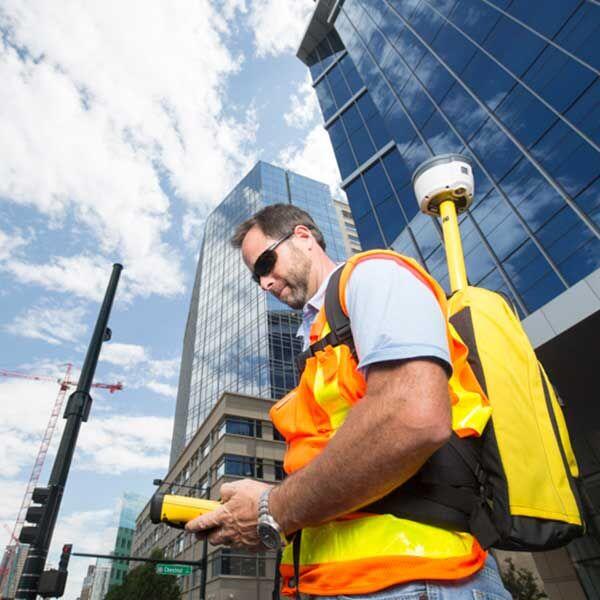We’ve all heard the decades-old phrase surveyors have used to describe GIS: “Get It Surveyed.” But the saying, which emerged based on deep-rooted perceptions, overlooks the overlap and similar functions of the surveying and GIS fields. In fact, the disciplines are closely related. The crossover between the two offers significant opportunities for cooperation and information exchange as well as professional growth.
Surveying and GIS both provide answers to the same basic questions: “Where is it?” “What is it?” “How does it relate to things around it?” “What about it is interesting or important?” And they both seek to address the most important question: “How can I get the information to people who need it?” So, given the similarities, why the gap, be it real or perceived?
Both disciplines use positions and attributes as primary data. But their data acquisition is based on a differing emphasis on precision. Surveyors focus on precise measurement and positioning, while GIS requires detail and precision in descriptions and attributes. GIS attributes have little value without positions, and precise survey locations are nearly always accompanied by some sort of descriptive information. Instead of a gap, it’s actually a complementary situation.
Meeting User Needs
It’s intriguing to note that in many cases the push to close the gap comes from clients and end users of GIS data. They are learning that increased precision in positioning can make their geospatial information more valuable and useful. For example, locating a water shutoff valve during a Minnesota winter often involves digging through snow and ice. If the valve location is known only to within a meter or so, the field crew needs to dig a large hole—a difficult and time-consuming task. But with decimeter or even centimeter precision, the crew can find the valve more quickly.
Consumers of GIS data also want more than 2D drawings. The ability to produce 3D deliverables with comprehensive attributes makes accuracy and precision a valued asset in many enterprises. However, traditional GIS technicians may lack the skills and equipment (high-precision GNSS and optical instruments) needed to produce centimeter accuracy. As more GIS users understand the benefits that come with survey accuracy, they are turning to surveyors to gather data destined for GIS applications.
At first glance, this seems like a win-win situation, with more work for surveyors and better data for GIS. But many surveyors are not trained to collect the information that would satisfy the GIS core need for detailed data. Missing information can result in costly revisits and doesn’t help to close the survey-GIS gap. What’s needed is a way to tighten the interaction between data acquisition and data management and analysis.
Building Bridges
There are two ways to solve the problem. In one approach, survey-grade positioning solutions such as the Trimble® R1 or R2 GNSS receivers can be tied into the GIS workflow. This method simplifies the process of gathering decimeter (or better) positions and can be used by GIS professionals. By using software development kits or configurable solutions such as Trimble TerraFlex™ software, users can blend precise positions with GIS workflows and attribute collection. The approach lends itself well to consumer-grade handhelds and a Bring Your Own Device (BYOD) philosophy.
A second approach calls on the surveyor to gain specific knowledge about the information used in the GIS. This can best be accomplished by delving directly into the GIS database and creating workflows that capture all of the necessary data. For example, Trimble Business Center software can connect to an Esri database and extract object data and schema. This information can be used to automatically create the code libraries used by field surveyors with Trimble Access™ software. Then, when the field crew calls up a code for a specific feature, the associated attribute details guide the surveyor in gathering all the needed information. Aside from collecting additional attributes, the surveyor can operate within his or her existing workflows.
While matching survey feature codes to GIS needs isn’t new, the ability to automatically create feature codes from GIS schema is a significant step. A GIS database may have thousands of different features, each with a dozen or more attributes. Connecting directly to the database can save days or weeks of manual work to define feature codes and prevent errors or inconsistencies in definitions.
The link to the GIS database continues on the back end as well. When the survey field data returns to Trimble Business Center it is reviewed for accuracy and adjusted as necessary. Then, a single command writes the new survey data directly to the GIS database. When the GIS user refreshes the map in the ArcMap environment, all of the new data is there and ready for use.
In addition to bypassing the usual process of exporting from one package and importing to another, the GIS approach used by Trimble Business Center removes many of the challenges faced by surveyors unaccustomed to collecting such rich attribute information. Each feature, together with its complete attributes and survey metadata are available in the GIS database.
As the industry evolves, the gap will continue to narrow. Surveyors should expect to be asked to provide more GIS-ready data. By adopting tools that allow survey solutions and workflows to interact directly with complex GIS databases, geospatial professionals can replace the gap with new business opportunities.






